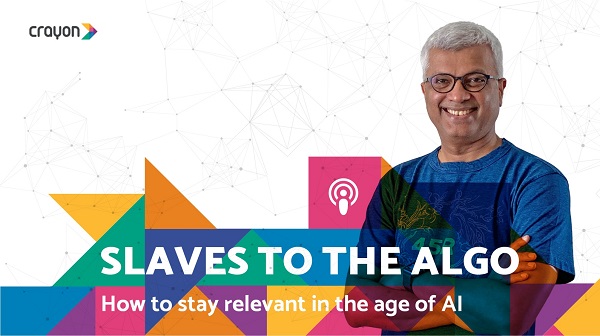Artificial intelligence is one of the most significant breakthroughs of the 21st century. Experts from different industries study its capabilities and discover new ways of its application. We call AI an emerging technology, however, scientists have been working in this direction since the 1950s.
At first, AI was far from smart robots we see in sci-fi movies. Nevertheless, thanks to such technologies as machine learning and deep learning, AI became one of the most promising areas of the IT industry. The demand for AI developers constantly grows, and some experts imagine a future where computers replace humans. Even though it’s too early to speak of artificial intelligence as of a threat to the workforce, modern workers will definitely benefit from learning more about this technology because it will allow them to prepare for the future сhanges in their industries and to get familiar with a new, effective and interesting tool.
Important reasons to start studying AI
AI enters our lives in many different ways. For example, we use assistants like Amazon Echo, Google Assistant, or Siri. When we play video games, AI is always our enemy. However, not everyone knows that AI is present even in Google Translate and tools that detect spam messages.
The understanding of artificial intelligence opens lots of opportunities. It’s enough to master the basics of this technology to understand how simple tools work. As you learn more about AI, you get a chance to become a developer who will create advanced AI applications like IBM’s Watson or self-driving cars. There are endless possibilities in this field. Studying AI is necessary for a career in software engineering, in case you want to work with human-machine interfaces, neural networks, and quantum artificial intelligence. Companies like Amazon and Facebook use AI to make shopping list recommendations and to analyze big data. The understanding of AI is also necessary for hardware engineers who create home assistants and parking assistants.
Those who want to start learning AI have a plenty of options available. For example, the internet allows everyone to enroll in online courses. Some of them are aimed towards people who already have a certain level of technical knowledge and focus on coding, while other courses will help even those who don’t have any prior expertise in programming and engineering.
The best online AI courses for 2018
- Learn with Google AI – This is a fresh project which was launched by Google to let the general public understand what AI is and how it works. Although the resource is growing slowly, it already has a machine learning course for beginners that includes Google’s TensorFlow library. This course will help even those who know nothing about AI, covering the basics of machine learning, introducing TensorFlow, and explaining the crucial principles of designing neural networks.
- Stanford University – Machine Learning – The course is available on Coursera. It is taught by the founder of Google Brain, Andrew Ng. You can enjoy this course for free or choose paid options in case you want to get a certificate that can be used in the future when making the first steps towards your career in software engineering. This course will familiarize you with the examples of AI-driven technologies from real life, such as advanced mechanisms of web search and speech recognition. You will also understand how neural networks learn.
- Nvidia – Fundamentals of Deep Learning for Computer Vision – Computer vision is a discipline that focuses on creating computers capable of analyzing the visual information as the human brain does. This course covers the necessary technical fundamentals along with the practical applications of object classification and object recognition. You can study at your own pace and learn how to build your own neural net application.
How to Get Started with AI
There’s no surprise if you experience certain difficulties studying artificial intelligence. If you get stuck, we suggest looking for a solution on Kaggle or posting your questions on specific forums. It’s also important to understand what to focus on and what to do first.
1. Pick a topic you are interested in
First, select a topic that is really interesting for you. It will help you stay motivated and involved in the learning process. Focus on a certain problem and look for a solution, instead of just passively reading about everything you can find on the internet.
2. Find a quick solution
The point is to find any basic solution that covers the problem as much as possible. You need an algorithm that will process data into a form which is understandable for machine learning, train a simple model, give a result, and evaluate its performance.
3. Improve your simple solution
Once you have a simple basis, it’s time for creativity. Try to improve all the components and evaluate the changes in order to determine whether these improvements are worth your time and effort. For example, sometimes, improving preprocessing and data cleaning gives a higher return on investments than improving a learning model itself.
4. Share your solution
Write up your solution and share it in order to get feedback. Not only will you get valuable advice from other people, but it will also be the first record in your portfolio.
5. Repeat steps 1-4 for different problems
Choose different problems and follow the same steps for each task. If you’ve started with tabular data, choose a problem that involves working with images or unstructured text. It’s also important to learn how to formulate problems for machine learning properly. Developers often need to turn some abstract business objectives into concrete problems that fit the specifics of machine learning.
6. Complete a Kaggle competition
This competition allows you to test your skills, solving the same problems many other engineers are working on. You will be forced to try different approaches, choosing the most effective solutions. This competition can also teach you collaboration, as you can join a big community and communicate with people on the forum, sharing your ideas and learning from others.
7. Use machine learning professionally
You need to determine what your career goals are and to create your own portfolio. If you are not ready to apply for machine learning jobs, look for more projects that will make your portfolio impressive. Join civic hackathons and look for data-related positions in community service.
Conclusion
The basic understanding of AI and machine learning becomes more and more valuable in any area of business and any profession. Thanks to various online courses, today you don’t have to go to university to learn this complex and interesting technology. Even if you don’t have any prior experience in engineering, you can learn artificial intelligence from home and start applying your knowledge in practice, creating simple machine learning solutions and making first steps towards your new profession.
























